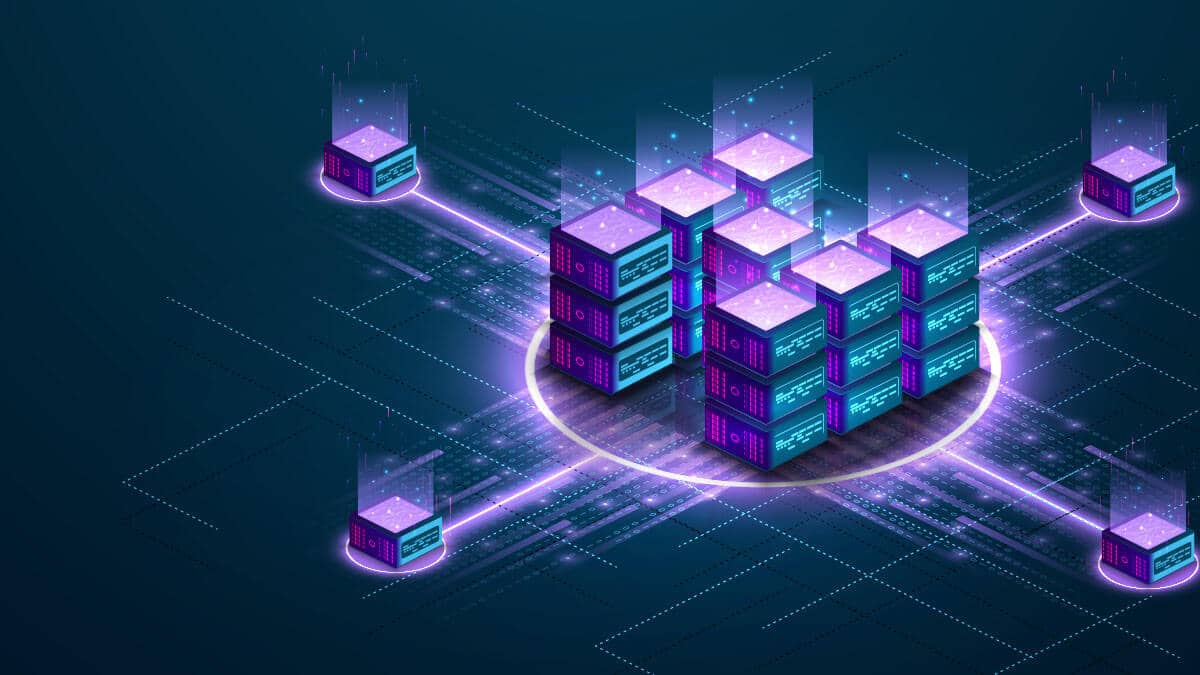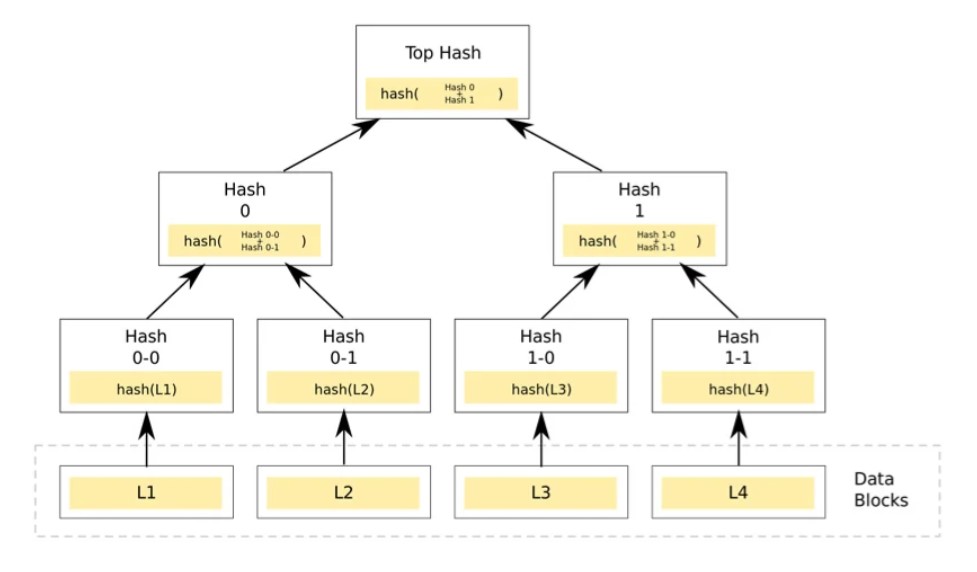This article was published as a part of the Data Science Blogathon.
Introduction
Blockchain technology is a decentralized, distributed ledger that preserves a record of digital asset ownership. It is a means to save data and information in a secure digital format. They are well known for their critical function in cryptocurrency systems like Bitcoin, where they keep a secure and decentralized record of transactions. The USP of it is that transactions are secure and safe and do not need the authorization of a third party like a bank or financial institution.

Blockchain, also known as distributed ledger technology (DLT), uses a decentralized network and cryptographic hashing to make the history of any digital asset unalterable and transparent.
There are also countless chances accessible from respectable companies all across the world. As a result, you will be able to develop in your profession. These interview questions will help you in your Blockchain interview.
Blockchain Interview Questions
1. What is Blockchain?
A Blockchain is a constantly increasing ledger (file) that maintains a permanent record of all transactions in a secure, chronological, and immutable manner. It can be used to securely transfer money, property, contracts, and other assets without needing a third-party mediator such as a bank or government.
Blockchain is the base for one of the most popular cryptocurrencies, Bitcoin. It is a peer-to-peer electronic cash system and a decentralized network that enables users to conduct transactions directly without needing a third party to supervise the exchange of money.
2. What is the difference between Blockchain and Hyperledger?
Blockchain is a decentralized technology that uses encryption to secure unchangeable data called blocks. Hyperledger is a platform or organization that enables individuals to create private ones.
It allows you to create public and private Blockchains, whereas Hyperledger only allows you to create private Ones.
Blockchain is classified as public, private, or consortium. Blockchains and Hyperledger are private Blockchain technologies that restrict access to Blockchain data to predetermined users, configurations, and programs.

Blockchain can be used in various industries, including business, government, and healthcare, but Hyperledger is largely used for enterprise-based applications. Wherever we talk about public Blockchain, we’re talking about using Blockchain on the internet, whereas Hyperledger-based solutions are designed for use within an organization’s intranet.
3. What Exactly Is a Blockchain Wallet and How Does It Work?
A blockchain wallet is a piece of digital software that keeps private and public keys while also tracking and recording all blockchain transactions involving those keys. In theory, its wallet does not hold bitcoin; all records associated with these keys are saved on the blockchain hosted by the wallet.

( Source: https://www.illawarramercury.com.au/story/7261908/seven-factors-to-consider-when-choosing-a-bitcoin-wallet/)
Public and private keys are used in blockchain wallets. In blockchain wallets, public and private keys are used similarly. Like an email address, a public key may be shared with others. When you create your wallet, you also create a public key, which you can share with others to collect funds. The secret of the private key is strictly guarded.
4. What do you know about Merkel Tree?
Merkel Tree is a data structure used for block verification. It takes the shape of a binary tree, with cryptographic hashes for each block. A Merkle tree is built the same way as a binary tree, with each leaf node representing a hash of a block of transactional data and each non-leaf node representing a hash of its leaf node. The Merkel root, also known as the hash root, is the final hash root of all transaction hashes. It includes all of the transactions that underpin all of the non-leaf nodes.

( Source: https://en.wikipedia.org/wiki/Merkle_tree)
The most typical and simple type of Merkle tree, called a Binary Merkle Tree, is shown in the example above. As you can see, there is a top hash known as the root hash, which is the hash of the entire tree. In essence, Merkle trees are a type of data structure that may combine “n” hashes into a single hash.
5. What exactly is cryptography? How is it related to Blockchain?
Cryptography is a technique for protecting data from unauthorized access. Cryptography is used in blockchain to safeguard transactions between two nodes in a blockchain network. As previously stated, the two essential concepts in a blockchain are cryptography and hashing. In a P2P network, cryptography is used to encrypt messages, while hashing is used to protect block information and link blocks in a blockchain.
A blockchain is an important tool for peer-to-peer transactions, digital wallets, decentralized currencies, and more. All this needs to be highly secure. This is where cryptography comes into place. Mainly Symmetric Cryptography is used in Blockchain.
6. What is Ethereum?
Ethereum is a Blockchain-based open-source software platform that allows developers to create and deploy decentralized applications (i.e., applications that are not controlled by a single entity). You can create a decentralized application in which the participants determine the decisions.
Ethereum was created to be scalable, programmable, secure, and decentralized. It is the blockchain of choice for developers and businesses developing a technology based on it to transform how many industries work and how we live our lives.
7. What is the distinction between the Bitcoin blockchain and the Ethereum blockchain?
8. What exactly are Smart Contracts, and how do they function?
A smart contract is a digital contract based on algorithms and coding. Because they run on the blockchain, they are stored on a public ledger and cannot be edited. The blockchain handles smart contract transactions, which means they can be submitted automatically without the assistance of a third party. Smart contracts are safe, transparent, devoid of third parties, autonomous, and precise.
For example, smart contracts are utilized in the real estate industry to document property ownership of any structure. Eliminating the need for lawyers or brokers improves transaction speed and efficiency. Sellers can direct the process.
.png)
( Source: https://pirimidtech.com/what-is-a-smart-contract-how-does-it-work/)
9. What Exactly Is Cryptocurrency Mining, and How Does Bitcoin Mining Work?
10. What Is Blockchain Hashing?
11. Where do smart contract nodes execute code?
12. In Blockchain, which cryptographic algorithm is used?
13. What exactly is a ledger?
14. What is meant by DAO?
DAO is an acronym that stands for Decentralised Autonomous Organisation. It is a self-sufficient and decentralized organization. It is represented by regulations encoded as a computer program, which is transparent, owned by shareholders, and unaffected by the central government.A DAO is the most sophisticated type of smart contract. A smart contract is a computer program that exists autonomously on the Internet while also requiring people to fulfill a task that it cannot do on its own.

( Source: https://play.decentraland.org/)
One of the good examples of DAOs is Decentraland. An Ethereum-based program called Decentraland aims to motivate a global user network to manage a cooperative virtual world. Users of Decentraland can explore, engage, and play games in this virtual environment while buying and selling digital property.
15. What is a Coinbase transaction?
A Coinbase transaction is the first transaction in a block. It is a distinct form of bitcoin transaction that a miner can generate. Miners use it to collect the block reward for their efforts and any additional transaction fees earned by the miner.
Conclusion
Blockchain’s purpose is to enable digital information to be recorded and distributed, but not altered. A blockchain, in this sense, serves as the foundation for immutable ledgers or records of transactions that cannot be changed, erased, or destroyed. For this reason, its technologies are distributed ledger technologies (DLT).
To conclude:
- A blockchain is a shared database that differs from traditional databases in the way data is stored; they store data in blocks that are then connected using encryption.
- As new data arrives, it is added to a new block. Once the block has been filled with data, it is chained onto the previous block, putting the data in chronological sequence.
- A blockchain can hold several data types, but its most popular application has been as a transaction ledger.
- In the case of Bitcoin, blockchain is employed decentralized, such that no single person or organization has control—rather. All users keep power collectively.
We had a look at some Blockchain Interview questions. This will help you in your Web 3.0 interviews. You can study and revise them accordingly.
The media shown in this article is not owned by Analytics Vidhya and is used at the Author’s discretion.





